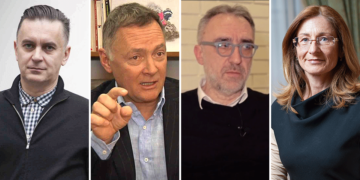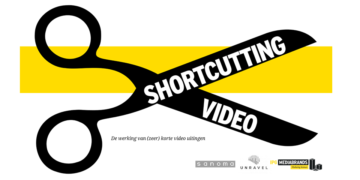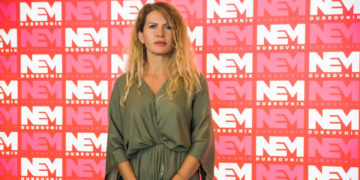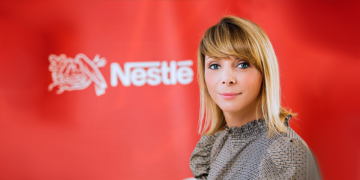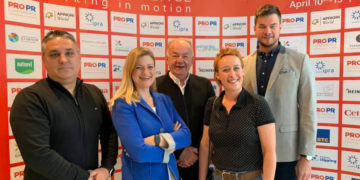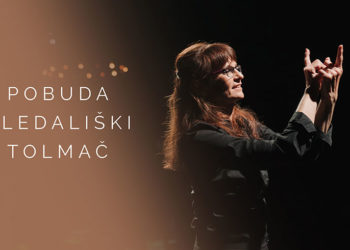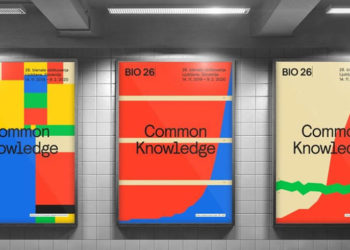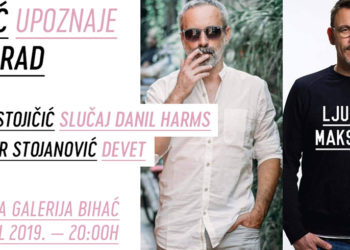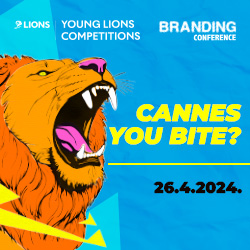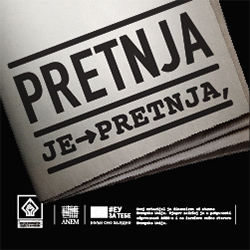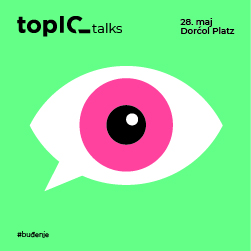Drugi jezik na kojem je dostupan ovaj članak: Bosnian
By: Milena Garfield Trobozić
Since there is widespread confusion and misunderstanding about the concepts of creative industries and culture and art, caused even by those who are at the highest levels in these activities (the Creative Industries Council), some things should be clarified, starting, as always, from the most basic question that reveals everything: why. Why do we do what we do?
Industry implies some kind of production, whose purpose is reaching the public masses and generating profit, or, to put it in layman terms, the goal of all industries is earning, regardless of whether they’re large or small.
The basic starting point of any industry is the cost-to-income ratio. Industries sometimes invest more money than non-profit, non-industrial cultural institutions in the hope of gaining a greater audience, ie. profit.
Unlike creative industries, the nonprofit activities that take place most often within the framework of cultural institutions are not driven by generation of profit, but by realization of their cultural missions. They rely primarily on donations and contributions that may come from the state, private donors, public and foundations. They have steering boards that should control the work of the management. Cultural institutions of non-profit character are often forced to sacrifice income for the sake of achieving their artistic goals, and on top of that they are not allowed to make a profit, but their income must be directed to future projects.
Both creative industries and non-profit cultural institutions rely on the skills and talents of artists in creating their programs. Naturally, both also employ experts outside the scope of art, such as bookkeepers, financial experts, marketing specialists and technical services.
Theatre as a profession can, for example, be a part of the creative industry if its basic goal is making income for its producers and financiers. That does not mean that such theatre performances, for example those on Broadway or West End, don’t include top artists, dancers, actors, directors, musicians, costume designers, composers. On the contrary, sometimes the best and most talented artists are creating these performances whose only goal – apart from the artistic value and superb skills which are implied – is to generate profit. Why is superb skill implied? Because without it there is no great box office results. One doesn’t exclude the other. Let’s take Hamilton for example – the historical musical about the first U.S. Finance Minister Alexander Hamilton created by Lin-Manuel Miranda under the famous non-profit The Public Theatre in New York, which then due to its great success and public interest, ie. profit potential, moved to Broadway where it became one of the greatest hits. Were the nature of the artistic achievement or the dignity of its creators undermined by this? Not even a bit.
Or let’s take the opposite example – The Magic Flute, which many consider to be Mozart’s best opera, and which, contrary to the example of Hamilton, came to be after it was commissioned by a commercial vaudeville theatre and garnered massive popularity among its audience.
Hollywood is a creative industry, and in it, as we well know, create or have created the world’s greatest filmmakers, from Charlie Chaplin, Altman and Meryl Streep, Laurence Olivier, to Spielberg and Coen brothers. Although some films of the acclaimed authors are sometimes funded partly because of their great artistic value, the goal of the producers is always profit. And the awards, which are part of the marketing.
Are these artists any less artists because they work for the benefit of these “capitalists”? Leonardo and Michelangelo were some sort of “artists for hire” in their own time. Especially the latter, who together with his team painted the Sistine Chapel, commissioned and funded by the then Pope, the greatest possessor of capital of that time, following all the postulates of creative industry – art for money and the mass audience.
It is often the case that art or culture and industry overlap, or to be more precise they don’t exclude each other, because artworks can reach huge market prices (a recent example was the sale of Leonardo’s painting), and popular works of the creative industry intended for entertainment, such as Hollywood movies, novel Don Quixote or the already mentioned opera The Magic Flute, can become part of the world’s cultural heritage.
The second complaint you will often hear in the public is that industries convert art into commodity, thus reducing and tying art and artist to market laws.
Let’s recall – all that is produced and sold, even for a nickel, has become a commodity and is a part of the market. What I am trying to say is that art is always on the market of the audience. The difference is only in price and goals.
Architects create buildings, houses and bridges exclusively for sale or on commission. But that doesn’t mean that architecture is not one of the most prominent arts.
A chair can be a sculpture, a historical museum piece, and can also be a part of the applied industry, intended for mass production and sales. What matters is the context and the reasons for the creation.
I believe that this public debate regarding creative industries and culture was further fueled by the founding of the Creative Industries Council by the current Prime Minister of Serbia. Namely, although the council is Creative Industries Council, it also dealt with activities that are in no way a part of these industries, such as theaters and ballets, which are almost exclusively nonprofit activities in Serbia. (There are individual examples of some produced performances, but they really are specific cases). At the same time, the Council fails to deal with one of the strongest creative industries in the country, which is the production of film and television content. I think that this fact has caused quite a confusion in the public.
So, a counsel to the Council – don’t confuse the public with your own confusion, but clearly define what you will deal with. Will you deal with the industry that demands certain market conditions, which, when the artistic activity is concerned, are very meager in our country? Or will you deal with culture, which is supported and nurtured through non-profit institutions, and is driven by completely different goals?
Separating the notion of industry and non-profit institutions of culture is not only a formal, but an essential issue for the further functioning and development of both.
And another note for the confused artists – keep in mind that you never confuse the notion of thrifty deals with the concept of creative industries. Thrifting is an activity meant for quick and easy earnings. An industry implies a highly complex and sophisticated production whose goal is to create a quality, preferably the best product on the market. Even when they work in the so-called industries – such as Broadway and Hollywood productions – whose goal is profit, artists can stay superb because their work doesn’t depend on the goals of their financiers and producers, but solely on their own skills, talents, achievements, and choices of which producer to go with, because, as we know, there are different producers out there.
Dear artists, also don’t be afraid that the industry will abolish your right to culture. Industries don’t compete with institutions of culture, and cultural institutions can never become an industry. But some works created in the non-profit cultural institutions can become a part of the industry if they are successful and popular enough – ie. if they are potentially profitable and catch the eye of representatives of profit-oriented industries.
Is not that the moment all creators dream about? To get their plays from the regional theater to Broadway, that Netflix or Amazon buy the rights for their movie thanks to festival awards and local success, or that their novel becomes a bestseller? All art strives for circulation, because all art needs audience!


